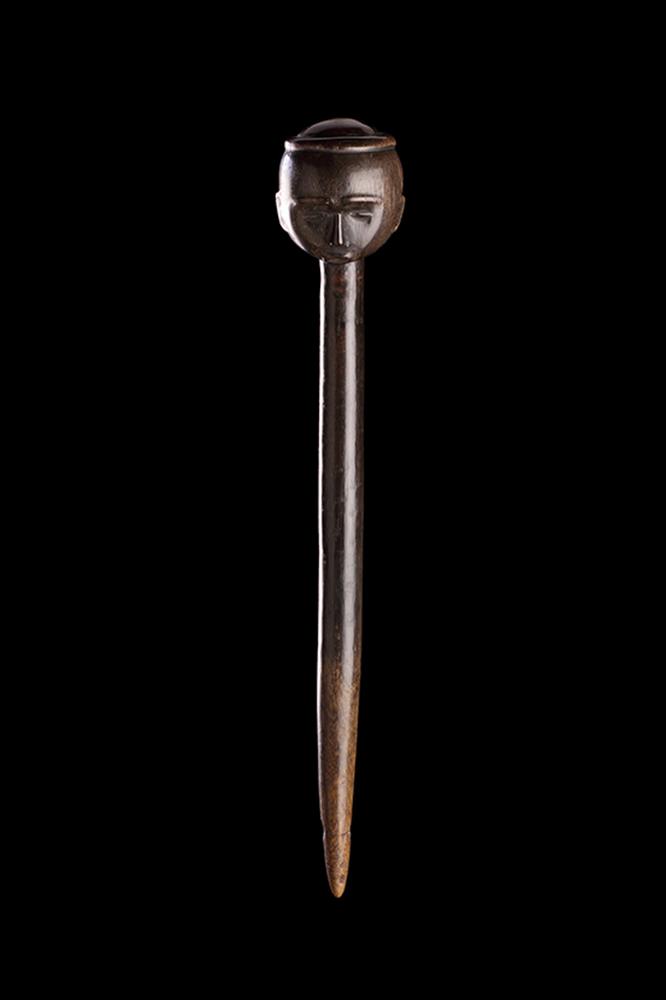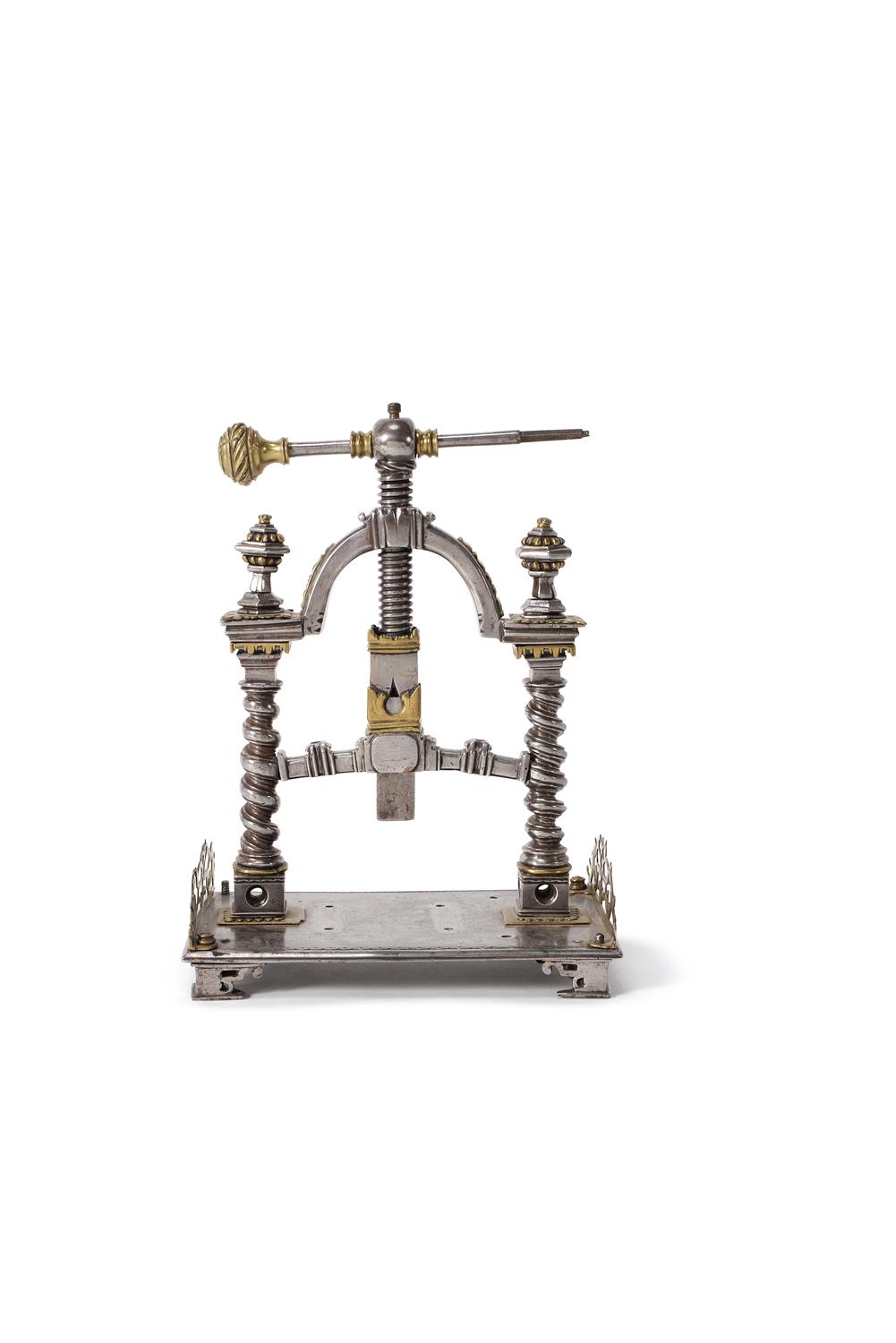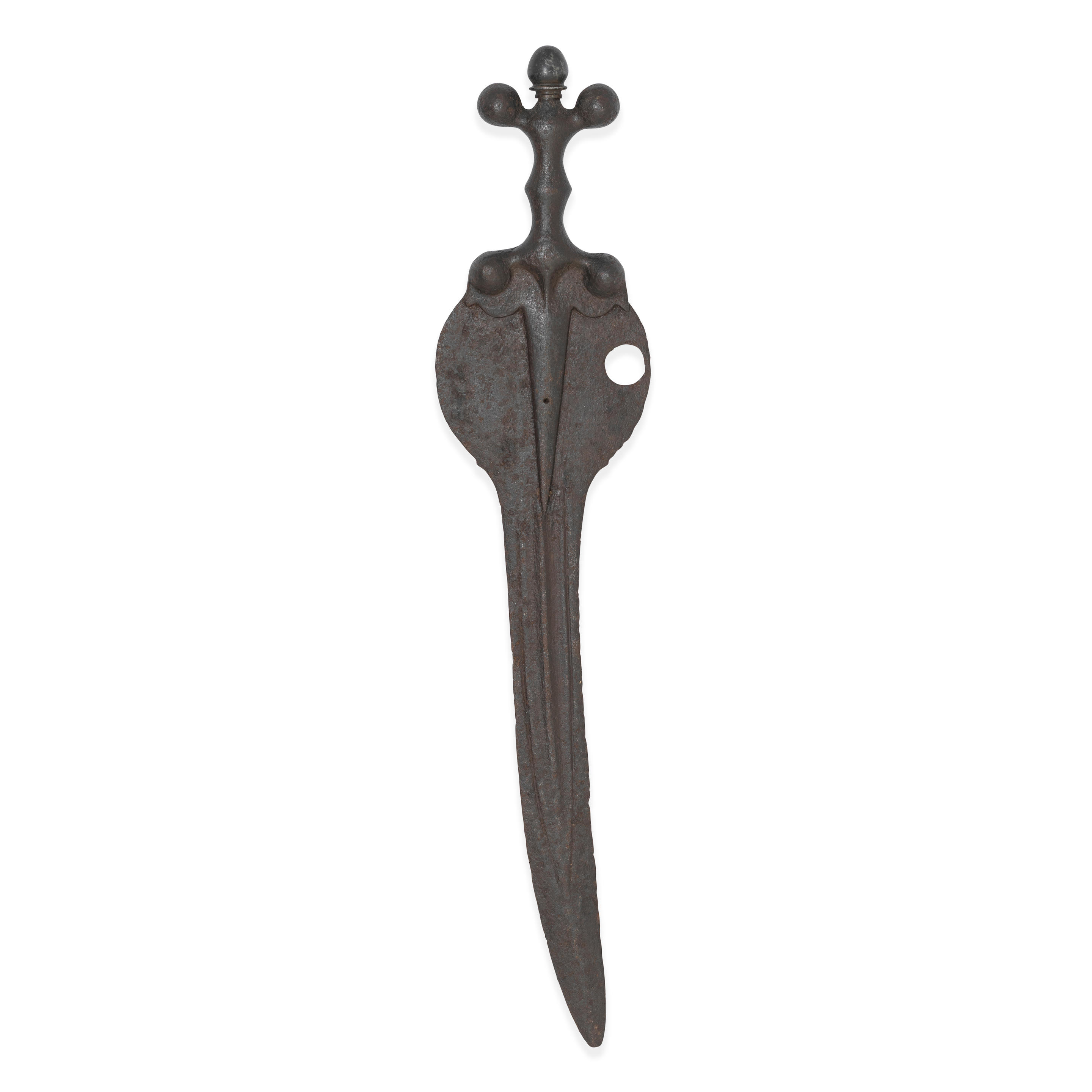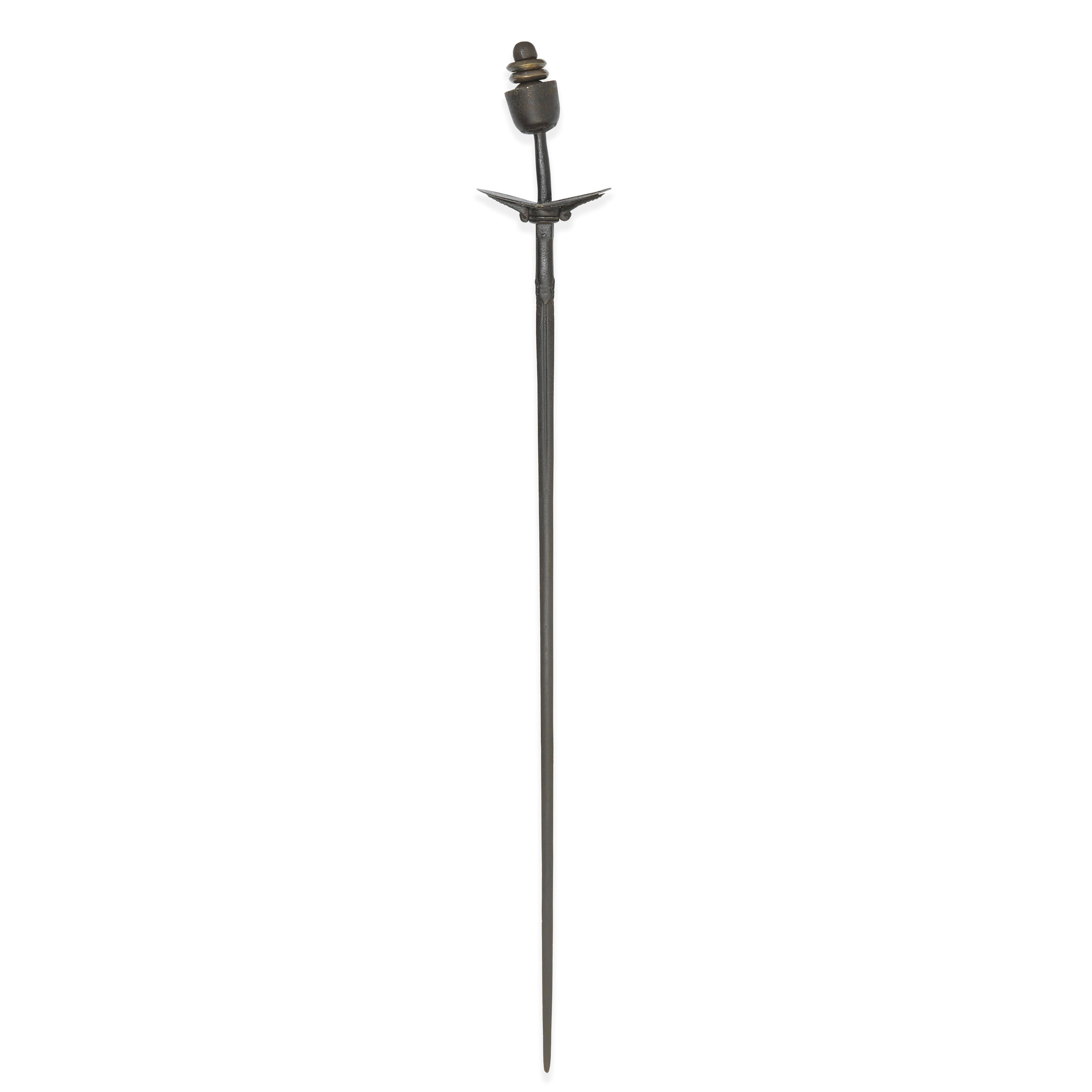λ A RARE SOUTH-AMERICAN TORTOISESHELL AND MOTHER OF PEARL CABINET ON STAND, 'MUEBLE ENCONCHADO' SPANISH COLONIAL, MEXICO OR PERU, 18TH CENTURY with ebonised ripple mouldings inlaid with brass and bone stringing and various floral motifs, the lattice parquetry top above seven drawers around a central cupboard, the door inset with a portrait of Saint Anthony and Padua enclosing a plush lined interior fitted with a mirror, flanked by turned columns, the canted sides each with a hinged door, enclosing a shelf, above two frieze drawers, on a later ebonised stand with spiral twist supports 138.5cm high, 182.5cm wide, 42cm deep Catalogue Note During the 17th and 18th centuries the upper strata of Colonial Latin America spent enormous sums of money on sumptuous furniture and works of art produced locally and also from Europe and Asia. The present lot is an example of a Peruvian technique called enconchado, practiced by ateliers in Lima. They used a rich tortoiseshell ground as a backdrop to a complex mother of pearl inlay of flowers, arabesques and geometric designs. This type of marquetry originated in the Spanish Philippines and the prototype for these cabinets is the famous piece made as a wedding gift for the grand-daughter of the Viceroy of Peru, now in the Dallas Museum of Art (see H. Hayward, World Furniture, p.106, fig.271). See Joseph J. Rishel with Suzanne Stratton-Pruitt, The Arts in Latin America 1492-1820, pp.490-91 for a similar desk resting on a bufete, in the collection of the Museo Pedro de Osma, Lima, Peru. For similar cabinets sold at auction, see Christie's, 20th May 2008, lot 385 and Sotheby's, Important Continental Furniture, 3rd July 2007, lot 12. Read more »
λ A RARE SOUTH-AMERICAN TORTOISESHELL AND MOTHER OF PEARL CABINET ON STAND, 'MUEBLE ENCONCHADO' SPANISH COLONIAL, MEXICO OR PERU, 18TH CENTURY with ebonised ripple mouldings inlaid with brass and bone stringing and various floral motifs, the lattice parquetry top above seven drawers around a central cupboard, the door inset with a portrait of Saint Anthony and Padua enclosing a plush lined interior fitted with a mirror, flanked by turned columns, the canted sides each with a hinged door, enclosing a shelf, above two frieze drawers, on a later ebonised stand with spiral twist supports 138.5cm high, 182.5cm wide, 42cm deep Catalogue Note During the 17th and 18th centuries the upper strata of Colonial Latin America spent enormous sums of money on sumptuous furniture and works of art produced locally and also from Europe and Asia. The present lot is an example of a Peruvian technique called enconchado, practiced by ateliers in Lima. They used a rich tortoiseshell ground as a backdrop to a complex mother of pearl inlay of flowers, arabesques and geometric designs. This type of marquetry originated in the Spanish Philippines and the prototype for these cabinets is the famous piece made as a wedding gift for the grand-daughter of the Viceroy of Peru, now in the Dallas Museum of Art (see H. Hayward, World Furniture, p.106, fig.271). See Joseph J. Rishel with Suzanne Stratton-Pruitt, The Arts in Latin America 1492-1820, pp.490-91 for a similar desk resting on a bufete, in the collection of the Museo Pedro de Osma, Lima, Peru. For similar cabinets sold at auction, see Christie's, 20th May 2008, lot 385 and Sotheby's, Important Continental Furniture, 3rd July 2007, lot 12. Read more »












Testen Sie LotSearch und seine Premium-Features 7 Tage - ohne Kosten!
Lassen Sie sich automatisch über neue Objekte in kommenden Auktionen benachrichtigen.
Suchauftrag anlegen